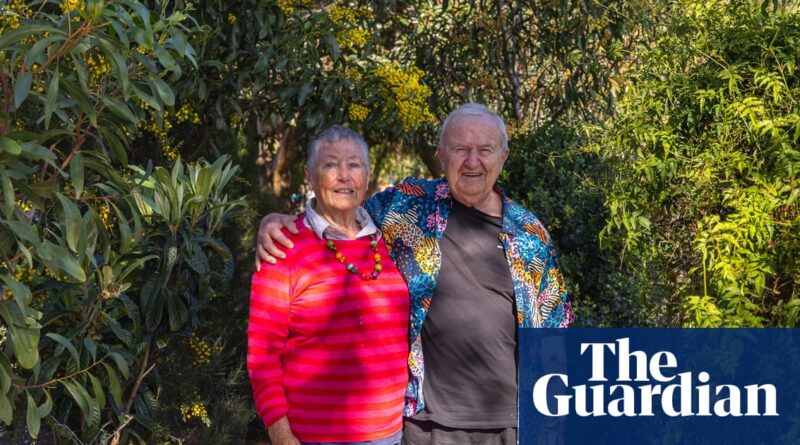‘We actually live in the forest’: how one couple naturally cooled their home
Aas soon as John Boland moved into his inner-city Adelaide home he ditched the concrete and sheets and planted fruit trees. In the 30 years since then, those trees have provided him with a third of his food and cooled his house so well that he doesn’t need air conditioning.
The deciduous trees on the west side of the house bathe the house in shade in the hot South Australian summer while letting in the afternoon sun in winter. They also block hot air in summer and cold air in winter.
Boland says: “Basically we live in the forest. “We [sit] listening to the birds singing, instead of listening to the air-con as it cools down, and you enjoy eating in a beautiful forest in the middle of the city.”
A 76-year-old professor of environmental mathematics, Boland lives with his wife, Chris Bryant, on a quarter-acre traditional estate in Felixstow, 6km from the town centre. The couple have long had a keen interest in maintenance and began making the house more functional and comfortable shortly after moving in 28 years ago.
“We try to pick the easy stuff first and see if it works,” Boland says. “We know a lot of principles – me from the climate side, and Chris from the food production side – and we can put the two together and see how we go.”
Instead of knocking down their 1940s clapboard house and starting from scratch, Boland and Bryant found opportunities to improve performance as they rose. A simple example: when they had to take apart their walls to remove asbestos or repair termite damage they made sure to include termites as part of the repair.
Boland, who did his PhD on indoor heat flow, gradually improved the home to increase ventilation, installing mesh security screens so he could leave doors and windows open. He had the interior wall between the living room and the bedroom removed to ensure that the evening breeze could blow into the house.
“During the summer, we may walk in the evening, open the doors but lock the security doors… all we can hear from other neighbors is their air conditioners running,” he says. “They haven’t been looking at what the weather is doing and trying to take advantage of it, which is what we’re doing.”
The couple switched to solar panels in early March 2000 but maintained their flexibility by opting for a smaller system to see if they could reduce their energy use. Boland says: “Until we need it, we don’t do it.” That’s the idea, try something small first.
They stuck with a smaller system and were able to use less energy than they produced, but in 2021 they took advantage of an extended government grant to add more panels and batteries. They drink rainwater and pour water from their washing machine into the garden, a home for birds, blue-tongued lizards and four species of frogs.
From season to season, their orchard produces apples and pears, macadamias and pecans, peaches and pomegranates, limes and quandongs, lemons and mandarins and more, all hardy and thriving in rich soil. of Adelaide. By planning their meals around their seasonal garden produce and mixing as much waste as possible, the couple has reduced their share of landfills. They take the rubbish bin out of their homes for council collection only once a month, instead of once a week.
Their reduced environmental impact extends to transportation. If Boland has to walk or take the bus to go shopping, he has gone more than ten years without a car. He says: “We had a car accident about 13 years ago, and we couldn’t afford to buy another one.
While Boland’s efforts didn’t always go well — from planting trees that didn’t suit the climate to installing windows that were impossibly large — he says the mistakes of along the way they helped him develop new designs later.
He says: “I’m a mathematician too, so I’m ready, and we’re trying to improve the way we live. It’s really fun, to be honest and satisfying.
As well as teaching, Boland now gives public lectures encouraging Australians to use simple ways to make their homes more comfortable. winter.
“You see, that’s the whole point,” he says. “A lot of what we’re doing is about increasing comfort, not just about saving energy.
“You can have fun and try things, see how far you can go.”
#live #forest #couple #naturally #cooled #home
